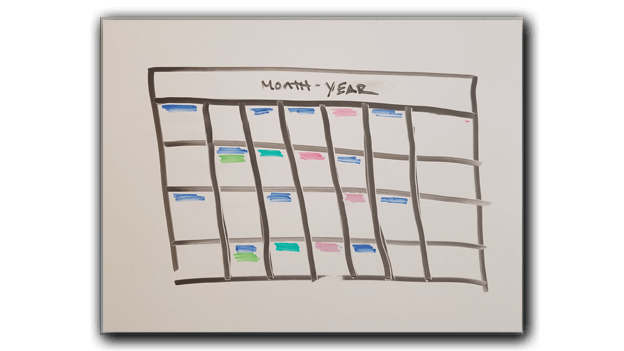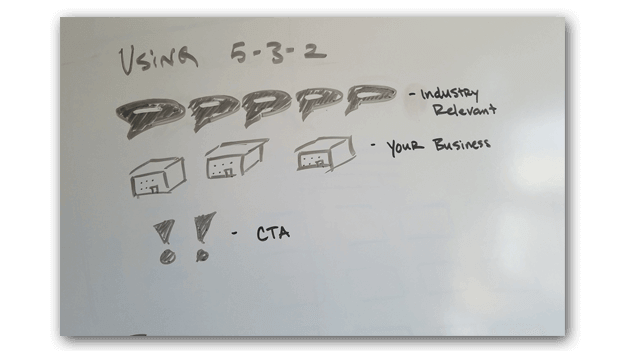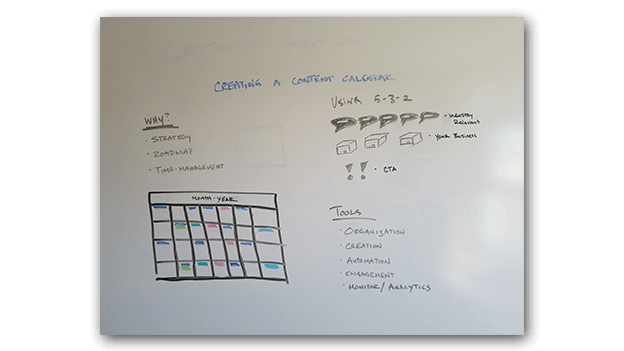
Creating Your Social Media Content Calendar (Template Included)
Creating Your Content Strategy
You’ll get a better grip on your content marketing when you have strategy. You can’t have strategy without a clear plan, and that’s where your content calendar comes in. Having a content calendar allows you to plan and organize your social marketing ahead of time in order to get better results.
Don’t Miss a Date
Those important holidays and events won’t take you by surprise. When you create your content calendar, you can plan ways to post unique content for key dates and events in your industry. You won’t be scrambling last minute to find a creative way to promote the launch of a new product, to create a post for national _____ day, etc. You’ll have time to plan content that’s worth sharing.
Fill in the Gaps
Having a content calendar will give you a clear visual of where there are still gaps to fill in your social media marketing.
Work Well as a Team
A content calendar is a great way to work on social media as a team without stepping on each other’s toes and overwriting someone else’s work.
Become Consistent
When you have a calendar, you are better able to provide consistency for your followers instead of having a hit-and-miss posting pattern.
Make Your Life a Little Easier
Having a social media schedule to follow can make it easier to come up with shareable content. For example, you may choose a theme for a week or month in your social media calendar (or maybe you have certain types of posts for various days of the week). Then when you are collecting content to share, you know exactly what kinds of things you need to create or find.
That’s just a taste of what a social media calendar can do for you. If that sounds like something you need, you may want to keep reading.

Before You Create Your Calendar
It’s going to be challenging to make your content calendar if you don’t hash out a few details beforehand.
Here are a few steps you’ll want to take before you begin:
- First, if you have not already, you need to identify the audience you are targeting.
- Determine which social platform(s) your target audience is using and choose to make those your focus.
- Identify the types of content that will appeal to your target audience.
- Establish who in your team is responsible for the content you will create and post.
- Plan a time to sit down with your team to put together your calendar.
Tools for Creating Your Content Calendar
For any assigned task or project, you need the right tools to get a great end result. The tool you choose for your content calendar will depend on the specific needs you and your marketing team have. For that reason, we’ll highlight several tools here that you can use to create your content calendar.
Google Calendar
This is an excellent tool to use not only for your personal and work schedule, but also for creating your social media schedule. I love this tool because it’s easy to use and can be easily shared with any number of team members. And if you didn’t know, it’s also available as a mobile app.
Not only are you able to make a schedule, but you can create reminders, color code events, create multiple calendars, create task lists, and so much more.
Trello
Trello, an online project management app, is a favorite here at Red Rocket. Not only is it an excellent way to assign and track multiple projects and assignments, but it’s an excellent tool to create your social content calendar. With the ability to create multiple different project boards, lists, and individual tasks/cards, you can organize your information in a way that makes it easy for team members to collaborate and make sure each assigned task gets completed.
Asana
Asana is another tool we’d recommend for your social media calendar. If your business social media is a team project, you’ll appreciate this task management tool that allows you to track projects and tasks and keep everything organized. You can use their calendar view to create your schedule and assign social media tasks to individuals on your team. And of course, there’s always something satisfying about a tool that allows you to check off a task when it’s complete.
Google Sheets
Google sheets is yet another collaboration tool that may be exactly what you need to create a content calendar that works well for you. You can choose to give as many team members access to view and edit as you like.
Excel Spreadsheet
If you’ve been using Excel for a while, you may feel most comfortable creating your calendar in an Excel spreadsheet. This will be a bit more challenging as far as collaboration goes but is otherwise an excellent way to organize your upcoming social posts.
Using the 5-3-2 Rule to Create Your Content Schedule
Have you ever followed a business or brand on social media that seemed to do nothing but try to sell you something? If so, I’m guessing that you probably did one of two things: you either quit following them, or you started ignoring their posts. If you’re nodding your head in agreement, you’re not alone. This traditional “pitch” is also known as push marketing. When using this approach, brands are pushing their information to you in hopes of making the sale.
In contrast to push marketing, there’s “pull” marketing. This is also commonly referred to as “inbound.” Inbound marketing is magnetic. Rather than pushing your agenda on a customer or client, you’re inviting them to be a part of the conversation. When done properly, inbound garners trust, excitement, and delight in a brand.

So what is the 5-3-2 rule?
The 5-3-2 rule is simple: out of every 10 social media posts you make, 5 should be something users could find value in, 3 should be something about your business, and 2 posts should be your call to action (CTA). Of course, you’ll want to mix up the order of the 5-3-2 posts.
Let’s dive into this a little deeper with some practical, real-life examples that you can use when creating your content calendar.
5 – Posts of Value
When considering what kinds of things to post for your “5 posts of value,” ask yourself the following questions:
- Is this relevant to your business?
- Does this align with my brand?
- Is this something that interests my audience?
- Is this something share-worthy?
- Would I be willing to share this on my personal feed?
If you can answer these questions with a “yes,” then the piece of content you’re about to share is probably pretty good.
3 – Relevant Posts About Your Business
For the 3 relevant posts about your business, this is your opportunity to tell people what’s going on with your company. If you’re stuck on ideas for topics, here are just a few to get you started:
- What’s new or newsworthy with your business
- Describe a new project you’re currently working on
- Mention any upcoming events you have
- Highlight an employee, or group of employees
- Share a #mondaymotivation style post or quote
- Create a poll (this can be great for gaining insight into your audience)
- Host a live video streaming event
2 – Call To Action Posts
Before getting started with these posts, have a clear understanding of what you want users to do. This could be registering for an upcoming event, downloading a whitepaper or e-book, or simply liking your page.
Having a goal in mind will make your call to action much more focused. As a general rule of thumb for businesses just starting out with 5-3-2, pick one call to action and repeat it for at least 1-2 months. While your call-to-action may be old news for you, it may be brand new to someone who’s just seeing your posts for the first time.
Keep It Evergreen
When creating a content calendar, it’s important to remember that it’s OK to reuse evergreen content. Evergreen content is content that your followers may find useful but doesn’t necessarily have an expiration date (like a holiday post or something seasonal).
Where a lot of people get stuck is that they feel like they constantly have to come up with new content. While it’s true, new content is something that establishes the authority of your business, don’t be afraid to “recycle” old social media posts that have performed well. Consider the fact that the average lifespan of a tweet is 18-minutes and a Facebook post is less than 5 hours. It’s not a bad idea to make sure that those golden blog post ideas get the proper kind of promotion they deserve.
Hopefully, this article helps you as you become more efficient at planning your content calendar. We’d love to hear about any additional comments, strategies, or insights you have. Let’s connect through any of our social media platforms; we’d love to hear from you.
